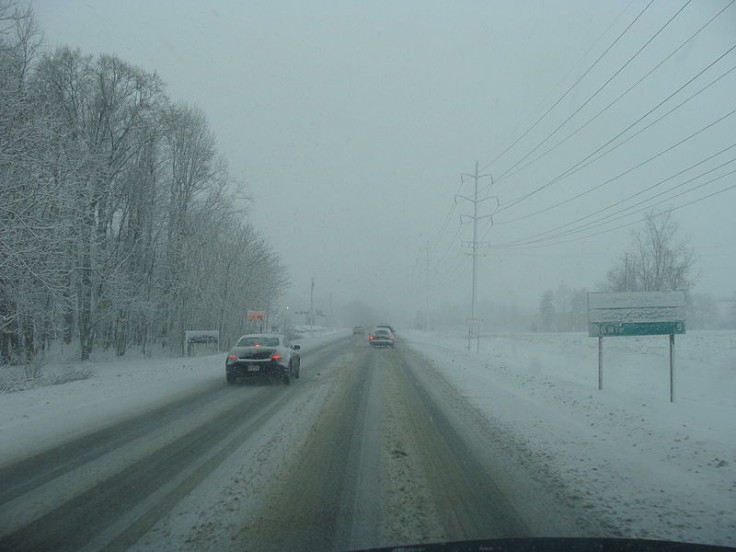Farmers' Almanac Predicts Cold Winter: Below-Average Temperatures For Most Of The Nation, Super Bowl Snow

“The ‘Days of Shivery’ are back!” Or so the Farmers' Almanac announced today along with its forecast of “a winter that will experience below average temperatures for about two-thirds of the nation.” As of today, the 2014 issue of this most venerable publication is available at bookstores, grocery stores, and online here.
While the almanac is predicting the coldest winter temperatures for the Northern Plains east into the Great Lakes, below-normal temperatures will in all likelihood take hold in the area east of the Continental Divide through Appalachia and then north and east through New England. At the same time, the Midwest, Great Lakes, and Central and Northern New England should receive lots of snow; the almanac warns that the thermometer may vacillate above or below the freezing mark in southern New England, southeast New York, New Jersey, and down through the Mid-Atlantic region. These same four regions will also experience either copious rain or snow, states the almanac. And, just as the East Coast will be unusually wet, the Pacific Northwest will be unusually dry this year.
Only in the Far West and the Southeast will winter temperatures average close to normal, and only a few areas will enjoy days where temperatures tip above the normal mark for winter. “Significant snowfalls are forecast for parts of every zone,” the editors stated in a press release. Mid-March, in particular, could bring a wave of storminess stretching almost from coast to coast with strong and gusty winds accompanying various types of precipitation.
Football fans, take note: the Almanac is “red-flagging” the first 10 days of February for possible heavy winter weather in the Northeast and Mid-Atlantic states. On Feb. 2 (the date set for Super Bowl XLVIII at New Jersey’s Meadowlands stadium), the prediction is stormy weather. “But even if we are off by a day or two with the timing of copious wind, rain, and snow, we wish to stress that this particular part of the winter season will be particularly volatile and especially turbulent," the editors stated.
Who, you may very well ask, is ‘we’?
Pseudonym, Not Vampire
Although founder David Young published the first Almanac back in 1818, the official forecaster has been Caleb Weatherbee in the many years since then. Fans of the Almanac understand, of course, that this is an alias applied to each successive prognosticator who remains carefully hidden, though it is known that he or she lives somewhere in the United States. The pseudonym (or pen name) protects the true identities of each of the men and women who have provided weather predictions over the years, all of which have been based on a secret mathematical and astronomical formula.
Developed by Young, the carefully guarded formula takes moon phases, sunspot activity, tidal action, as well as many other factors into consideration. Forecasts are calculated several years in advance and once printed in the Almanac, they are never changed or updated. More importantly, the formula resides not on paper or within a safe deposit box but locked within the hearts and minds of each Caleb Weatherbee, who will, at the appropriate moment, whisper the formula to the next. Or so explains the Almanac.
“Though weather forecasting, and long-range forecasting in particular, remains an inexact science, many longtime Almanac followers claim that our forecasts are 80 percent to 85 percent accurate,” stated the editors. For those who love the challenge of extreme cold and the health benefits of winter snow (shoveling, skiing, and snowball fights can be great exercise), let's hope they are once again correct.



























